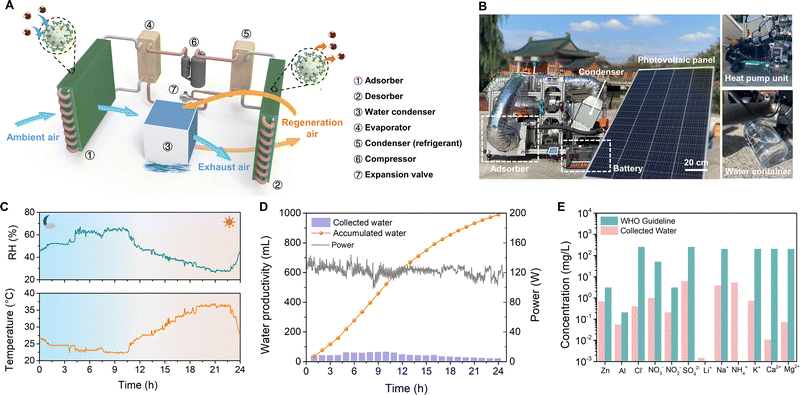A refrigeration system to produce freshwater in arid areas
A team of researchers from Shanghai Jiao Tong University in China demonstrated how integrating adsorption cooling and a heat pump system can improve the productivity of an atmospheric water harvester.
Due to climate change, water scarcity affects over 40% of the world population. Ensuring universal access to safe drinking water by 2030 is one of the Sustainable Development Goals defined by the United Nations (i.e. SDG 6). [1]
Although desalination is the most mature and commercially available solution to produce freshwater, the dependence on water sources restricts its development in remote inland regions. In arid areas, sorption-based atmospheric water harvesting (SAWH), where water is extracted from the atmosphere, represents a promising solution to the provision of clean water.
A team of researchers from Shanghai Jiao Tong University in China designed and tested an adsorption cooling-assisted water harvester. [2]
The water harvester uses metal-organic frameworks (MOFs), which are a class of porous materials that passively extract moisture from the air. The team introduced an active cooling at the adsorption stage for more efficiency. If humidity is beyond the operating humidity range in the daytime, active cooling helps the sorbent capture moisture effectively.
The researchers fabricated MOF adsorbers on compact heat exchangers and constructed an architecture for continuous freshwater production. For practical application, they integrated a heat pump into the harvester to provide the cooling and heating energy.

(Feng Y., et al. 2024 see figure in full size)
The team demonstrated this water harvester in Shanghai, China (30°40′ N, 120°52′ E) where ambient temperatures were 22-25°C at night and rose to 36°C during the daytime.
In a weather with an extremely low relative humidity level of 26% during the day, field tests yielded 990.4 ml of clean water continuously throughout the day. This represents a productivity of 9.9 LH2O kgMOF−1 d−1 with an energy consumption of 2.96 kW h LH2O−1, which is superior to that of the reported best-performing MOF water harvester.
The adsorption cooling stage brought on the added benefits of rapid sorption, enhanced capacity and reduced desorption temperature.
The team of researchers believes that further studies should focus on identifying the appropriate refrigeration system in order to achieve higher productivity. For example, for residential applications, cooling could be provided by an air-conditioning system, thus reducing the building’s carbon footprint. Solid-state cooling technologies (e.g., thermoelectric and caloric-based cooling) can offer a feasible approach to design portable atmospheric water harvesting devices.
For more information, download the open access article published in Energy & Environmental Science.
Sources
[1] Goal 6: Clean water and sanitation. https://jointsdgfund.org/sustainable-development-goals/goal-6-clean-water-and-sanitation
[2] Feng, Y., Ge, L., Zhao, Y., Li, Q., Wang, R., & Ge, T. (2024). Active MOF water harvester with extraordinary productivity enabled by cooling-enhanced sorption. Energy & Environmental Science. https://doi.org/10.1039/D3EE03134A
Image credits: For illustration purposes, Solar-powered MOF system in desert area © Nikita Hanikel/UC Berkeley
